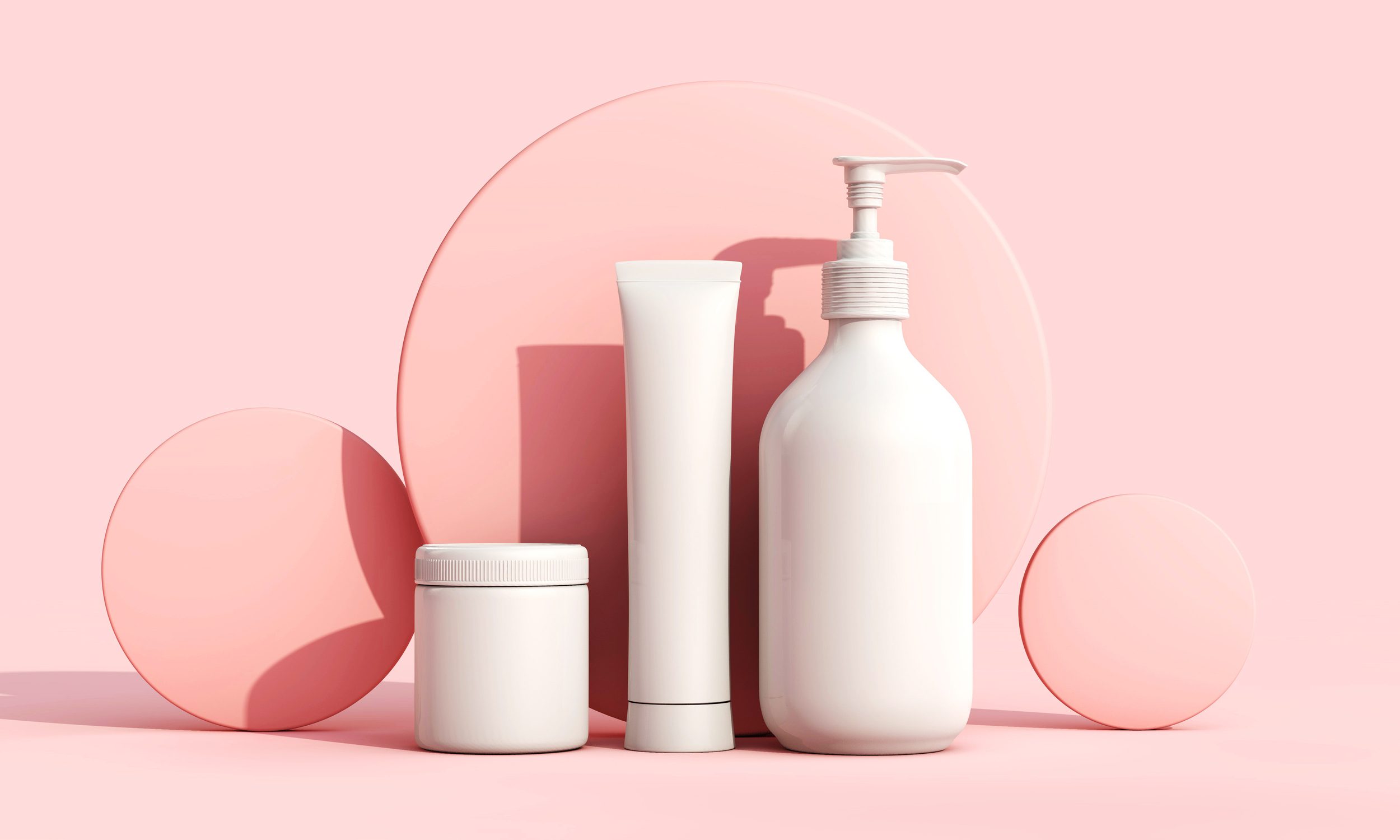Starting a skincare line can be exciting, especially with the skincare market thriving due to rising consumer interest in personal care and natural products. Starting a skincare brand with minimal financial resources is possible despite the usual high business costs.
This article will guide aspiring entrepreneurs through developing a unique product concept, navigating legal requirements, and marketing effectively on a tight budget.
By focusing on strategic planning and leveraging digital tools, anyone with determination can enter the skincare industry successfully.
Developing Your Skincare Product Idea

Developing a product idea is the foundational step in starting your skincare line, especially when working with limited financial resources.
Here’s how to shape a compelling product concept that can stand out in the competitive skincare market:
1. Identify a Niche
- Research Current Trends: Look into current skincare trends, such as organic ingredients, sustainability, or targeted solutions for specific skin problems like acne or hyperpigmentation.
- Find a Gap: Analyze the market to identify gaps your product can fill. Perhaps there’s a lack of affordable anti-aging products for men or a rising demand for vegan skincare.
2. Understand Your Target Audience
- Define Your Ideal Customer: Who are they? What are their skincare routines, challenges, and preferences?
- Engage with Potential Customers: Use social media platforms and online forums to talk to potential customers about what they look for in skincare products.
3. Create a Unique Selling Proposition (USP)
- Highlight What Makes Your Product Unique: This may be a novel ingredient, unique formula method, or unusual product use case.
- Solve a Problem: Ensure your product addresses specific concerns or underserved needs.
4. Prototype Your Product
- Start Small: Begin with a simple formulation that can be created at home or in a small lab setting. This keeps initial costs low.
- Iterate Based on Feedback: Create samples and get feedback from friends, family, or social media followers. Use their input to refine the product.
5. Sustainability and Ethics
- Consider the Environment: Make environmental friendliness a part of your product appeal, including using sustainable ingredients or recyclable packaging.
- Ethical Sourcing: Ensure your ingredients are ethically sourced, which can also become a part of your USP and appeal to conscientious consumers.
6. Leverage Technology
- Utilize Online Tools: Use online resources and formulation tools to help develop your product. This can reduce the need for costly consultancy or lab access in the early stages.
7. Set Realistic Goals
- Focus on Scalable Formulas: Develop products that are easily scaled from small batches to larger production runs without significant changes.
By carefully developing your skincare product idea, you can create a compelling and competitive entry into the skincare market that aligns with consumer needs and your brand vision.
Research and Planning
Research and planning are critical in starting your skincare line with no money, ensuring that your efforts are well-targeted and your resources are efficiently used. Here’s how to navigate these initial steps:
1. Conduct Market Research
- Identify Consumer Trends: Use tools like Google Trends, social media insights, and market research reports to understand consumer preferences and needs.
- Analyze Competitors: Study existing skincare brands that cater to your target market. Take a look at their products, marketing strategies, and customer feedback.
- Find Your Niche: Based on your research, pinpoint a niche that is underserved or growing. This could be a particular demographic, type of product, or skincare concern.
2. Develop a Business Plan
- Define Your Mission and Objectives: Clearly state what your brand represents and your goals.
- Outline Product Details: Describe your product’s characteristics, advantages, and differences compared to competitors.
- Plan Your Budget: Even with minimal funds, outline potential costs and how you’ll allocate resources. Consider costs for ingredients, packaging, and essential marketing.
3. Understand Regulatory Requirements
- Compliance and Safety: Research the legal and safety regulations that apply to skincare products in your region (e.g., FDA regulations in the U.S.).
- Certifications: Determine if you need any certifications (organic, cruelty-free, etc.) to appeal to your target market and comply with local laws.
4. Assess Production and Supply Chain
- Ingredient Sourcing: Find suppliers who offer small quantities or bulk discounts. Establish relationships with suppliers who can support your growth.
- Manufacturing Options: Decide whether you will produce in-house or outsource. Consider local labs or manufacturers who work with small businesses.
5. Prepare for Branding and Marketing
- Brand Identity: Develop a brand name, logo, and packaging design that resonates with the target audience.
- Marketing Strategy: Plan your marketing approach, focusing on low-cost, high-impact tactics like social media marketing, content marketing, and email campaigns.
6. Financial Planning
- Forecast Sales: Estimate initial sales based on market research and competitive analysis.
- Funding Options: Explore bootstrapping, crowdfunding, or small business grants to raise initial capital.
7. Feedback and Adaptation
- Pilot Testing: Consider launching a small batch of products to gather consumer feedback before a full-scale launch.
- Iterate Based on Feedback: Refine your products and business strategy using customer insights.
You set a strong foundation for your skincare line by thoroughly researching and planning. This preparation helps mitigate risks and positions you to utilize scarce resources and effectively capture market opportunities.
Formulating Your Product
Formulating your skincare product effectively involves balancing innovation, efficacy, and compliance with industry standards. Here’s a step-by-step guide to help you create a formula that aligns with your brand’s mission and appeals to your target market, even when working with limited resources.
1. Define Product Objectives
- Identify Needs: Determine the specific skin care problems your product aims to address, such as hydration, anti-aging, or acne treatment.
- Set Performance Goals: Decide what results users should expect from using your product (e.g., reduced wrinkles, clearer skin).
2. Research Ingredients
- Educate Yourself: Understand the properties of various ingredients and how they benefit the skin. Resources like scientific journals, industry publications, and online databases can be invaluable.
- Choose Key Ingredients: Select active ingredients crucial for achieving the desired effects. Ensure these ingredients are safe and effective for the intended use.
- Consider Formulation Compatibility: Make sure that the selected ingredients are chemically and physically stable together and suitable for the product you’re developing (cream, serum, etc.).
3. Develop the Formula
- Start Simple: Begin with a base formula with some essential ingredients. This can include a combination of active ingredients, emulsifiers, preservatives, and carriers.
- Lab Notebook: Keep meticulous records of your formulations, including measurements and sources, to ensure repeatability and to assist with scaling up later.
4. Prototype Iteratively
- Small Batches: Create small quantities to test the formula’s stability and effectiveness. This approach minimizes waste and allows for flexible adjustments.
- Iterate Based on Feedback: Use feedback from initial testing to refine the product. Adjust concentrations, and consider adding or removing ingredients to perfect the formulation.
5. Stability and Safety Testing
- pH and Viscosity Checks: Regularly check the pH and viscosity to ensure the product is within an optimal range for skin health and product performance.
- Microbial Testing: Ensure the product is free from harmful bacteria or fungi. Small lab kits are available for basic microbial testing.
- Shelf Life: Conduct accelerated stability testing to estimate the product’s shelf life under various storage conditions.
6. Ensure Regulatory Compliance
- Compliance with Regulations: Research and adhere to local and international regulations concerning cosmetic products, including ingredient bans and restrictions.
- Labeling Requirements: Prepare to meet the labeling standards, which include listing all ingredients, expiration dates, and usage instructions.
7. Scale Up Production
- Consult a Professional: Once the formula is established, consult a cosmetic chemist or a contract manufacturer to discuss scaling up production. They can provide insights into making the process more efficient and ensuring consistency across larger batches.
- Quality Control: Implement quality control measures to maintain the integrity of your formula during mass production.
8. Packaging and Preservation
- Choose Appropriate Packaging: Select packaging that maintains the stability and integrity of the product, such as airless pumps for oxygen-sensitive creams.
- Preservation System: Ensure the preservative system is effective for the product type and anticipated shelf life. Natural preservatives might be considered if they align with the brand ethos and product efficacy.
By following these steps, you can develop a skincare product that is effective and safe but also scalable and compliant with industry standards. This foundation is crucial for building consumer trust and establishing a successful skincare line.
Branding and Marketing
Branding and marketing are crucial for the success of your skincare line, mainly when operating with limited funds. Effective branding and strategic marketing can elevate your product’s visibility and appeal, attracting and retaining customers. Here’s how to approach branding and marketing on a budget:
1. Develop a Strong Brand Identity
- Define Your Brand’s Values: Establish what your brand stands for—sustainability, luxury, affordability, clinical efficacy, etc.
- Create a Visual Identity: Design a logo, choose a color scheme, and develop packaging that reflects your brand’s values and appeals to your target audience. Tools like Canva or Adobe Spark offer budget-friendly design options.
- Develop a Brand Voice: Decide how your brand will communicate with its audience. This voice should be consistent across all marketing materials and platforms.
2. Build a Compelling Online Presence
- Website: Create a simple, user-friendly website that showcases your products, shares your brand story, and makes purchasing easy. Platforms like Shopify or Wix provide cost-effective, template-based options.
- Content Marketing: Develop valuable content such as blog posts, instructional guides, and videos to educate your audience about skincare products and services. This helps to build your brand into a trusted skincare authority.
3. Leverage Social Media Marketing
- Choose the Right Platforms: Focus on social media platforms where your target audience is most active, such as Instagram, TikTok, or Pinterest, depending on your demographic.
- Engage Regularly: Consistently publish content, interact with users, and use appropriate tags to increase visibility and engagement.
- Influencer Collaborations: Collaborate with micro-influencers who align with your brand values. They usually have attractive followers and may be more cost-effective than influential people.
4. Utilize Email Marketing
- Build an Email List: Provide incentives such as discounts or free guides to encourage website visitors to subscribe to your email list.
- Send Regular Updates: Use email to notify subscribers of new products, special offers, and content they may find helpful. Tools like Mailchimp provide free services to a limited number of users.
5. Creative Promotions and Offers
- Launch Promotions: Offer limited-time promotions or bundles to create urgency and encourage purchases.
- Referral Programs: Implement a referral program that rewards customers for bringing in new customers, which can help grow your customer base organically.
By focusing on these areas, you can create a strong brand and effective marketing strategies that don’t require a significant financial investment. This approach helps establish a solid market presence and drives long-term growth.
Legal Considerations
Navigating the legal considerations is essential when starting a skincare line, even more so when budget constraints limit your ability to hire legal help. Understanding and complying with legal requirements will help protect your business and build customer trust. Here’s a breakdown of the critical legal areas you need to address:
1. Business Registration
- Choose a Business Structure: Decide on the most appropriate form for your business (e.g., sole proprietorship, partnership, LLC, or corporation). This affects your liability and tax obligations.
- Register Your Business: Register with local and state authorities to ensure legal operation. Depending on the structure, this may include obtaining an Employer Identification Number (EIN) from the IRS.
2. Trademarks and Brand Protection
- Trademark Your Brand Name and Logo: Conduct a trademark search to ensure your name and logo aren’t already used. Registering them as trademarks protects against others using similar identifying marks.
- Domain Name: Secure a domain name that matches your brand as closely as possible to establish your online presence.
3. Compliance with Cosmetic Regulations
- Understand FDA Regulations (or Local Equivalent): In the United States, the FDA does not approve cosmetics, but it does regulate their safety and labeling. Ensure your products comply with FDA requirements, such as ingredient safety, proper labeling, and the ban on certain substances.
- International Compliance: If you plan to sell products internationally, be aware of the regulations in those markets, such as the EU’s REACH or Canada’s CR.
4. Product Liability and Safety
- Safety Assessments: Conduct safety assessments to ensure your products are safe for public use. This might include dermatological testing and stability testing.
- Insurance: Obtain product liability insurance to protect against product-related damage or injury claims.
5. Labeling Requirements
- Accurate Labeling: Ensure your product label includes all necessary information, such as ingredients, instructions, and any necessary warnings. This is crucial for compliance and customer safety.
- Claims and Advertising: Be cautious about the claims made on labels and in advertising. Ensure all claims are supported by evidence to avoid issues with false advertising.
6. Privacy and Data Protection
- Customer Data: If you collect customer data (e.g., through sales online), ensure you comply with data protection laws like GDPR in Europe or CCPA in California, which govern how personal data is collected, stored, and used.
- Website Compliance: If you have a website, ensure it includes a privacy policy that outlines how customer data is handled and an accessible terms of service agreement.
7. Intellectual Property
- Protect Formulas and Trade Secrets: Consider the measures needed to protect your unique formulas or manufacturing processes as trade secrets. This typically involves confidentiality agreements with suppliers and employees.
8. Contracts and Agreements
- Supplier and Manufacturer Agreements: Have clear contracts with suppliers and manufacturers detailing the terms of service, delivery, payment, and confidentiality.
- Employment Law: If you employ anyone, ensure you are compliant with employment laws, which cover aspects like wages, worker rights, and workplace safety.
Navigating these legal aspects might seem daunting, especially with limited funds, but they are essential for establishing a robust and compliant business foundation. Resources like online legal services can help manage costs while ensuring your skincare line meets all legal standards.
Production Strategies
When starting a skincare line with limited resources, planning your production strategies efficiently can help manage costs and scale operations effectively. Here are some critical considerations for setting up and managing your production:
1. Decide Between In-House Manufacturing and Contract Manufacturing
- In-House Production: Starting with small-scale, in-house production can keep initial costs low. This approach allows for greater control over product quality and the flexibility to make quick changes based on customer feedback.
- Contract Manufacturing: As your business grows, outsourcing production to a contract manufacturer can be a cost-effective way to scale significantly when demand exceeds your capacity to produce in-house. It also minimizes the need for significant capital investments in equipment.
2. Evaluate Production Capacity
- Assess Volume Needs: Estimate how much product you need to produce to meet initial demand and plan for future growth. Consider factors like batch sizes, storage space, and shelf life.
- Equipment and Space: Determine the type of equipment and space required for production. For small batches, standard kitchen equipment may suffice. For larger scales, specialized cosmetic manufacturing equipment may be necessary.
3. Source Ingredients and Materials
- Supplier Relationships: Establish good relationships with reliable suppliers for ingredients and packaging materials. Looking for suppliers who offer flexibility in order quantity, competitive prices, and high-quality materials.
- Bulk Purchasing: Where possible, purchase ingredients and materials in bulk to reduce costs. However, balance this with the risk of overstocking, especially if your products have a limited shelf life.
4. Optimize Production Processes
- Streamline Operations: Develop efficient production processes to minimize waste and reduce labor costs. This could involve optimizing the order of operations, reducing setup times, and ensuring quality control checks are in place.
- Automation: Consider investing in automation for repetitive tasks as your business grows. This can improve consistency and speed production, although it requires upfront investment.
5. Quality Control
- Implement Testing Protocols: Establish rigorous quality control procedures to ensure each product batch meets your standards. This includes testing for consistency, stability, and compliance with any regulatory requirements.
- Feedback Loops: Utilize customer feedback to improve your production process and product formula continuously.
6. Packaging and Labeling
- Cost-Effective Packaging: Choose cost-effective packaging that aligns with your brand’s aesthetic and values. Consider the functionality of the packaging and its appeal to consumers.
- Label Compliance: Ensure your packaging and labeling meet all legal requirements for ingredient disclosure, usage instructions, and any necessary warnings.
7. Plan for Scalability
- Flexible Production Plan: Develop a production plan to scale operations up or down based on demand. This might involve modular equipment setups or contracts with manufacturers that can handle variable order sizes.
- Growth Management: Regularly review your production capacity and processes as your business grows. Be prepared to adjust to accommodate new products or changes in consumer demand.
By strategically planning your production, you can create a scalable and efficient operation that supports the growth of your skincare line while keeping costs under control. This foundation is crucial for maintaining product quality and satisfying customer demand as your business expands.
Sales and Distribution
Effective sales and distribution strategies are crucial for launching and growing your skincare line, particularly when working with limited resources. Here’s how you can plan and execute these strategies to reach your target market effectively:
1. Direct-to-Consumer (D2C) Sales
- Online Store: Establish online stores using platforms such as Shopify, WooCommerce, or BigCommerce. Removing intermediaries can give you complete control over customer experience and achieve higher profit margins.
- Social Media Sales: Leverage social media platforms that allow direct selling, such as Instagram and Facebook Shops, to engage with customers and facilitate sales directly.
2. Wholesale Distribution
- Local Boutiques and Stores: Approach local businesses that align with your brand to carry your products. This can help increase brand visibility and credibility.
- Online Marketplaces: List your products on established marketplaces that cater to beauty products, such as Amazon, Etsy, or specialized beauty platforms. This can extend your reach significantly.
3. Subscription Services
- Subscription Models: Consider offering a subscription service where customers receive your products regularly. This model can establish customer loyalty and provide predictable revenue.
- Member Exclusives: Offer subscribers special pricing or exclusive products to enhance the value of your subscription service.
4. Pop-Up Events and Markets
- Local Events: Participate in regional markets, trade shows, and pop-up events to increase brand exposure and directly engage with potential customers.
- Collaborative Events: Collaborate with other businesses to host events, which can help reach a broader audience and reduce event costs.
5. Leverage Existing Retail Networks
- Distributor Partnerships: Partner with distributors specializing in cosmetics and skincare to access a more comprehensive retail network. This can help scale your distribution quickly, though it may reduce your profit margins.
- Consignment: Place your products in shops on a consignment basis, reducing upfront costs for retailers and allowing you to maintain some control over product presentation and stock levels.
6. Strategic Sampling
- Product Samples: Offer free samples, either through online orders, at events, or in retail locations. Sampling can encourage trials and attract new customers.
- Promotional Offers: Use promotions such as discounts on first-time purchases or bundled products to encourage larger orders.
7. Customer Service and Support
- Responsive Support: Provide excellent customer service with easy returns, refunds, and support for inquiries. This can establish trust and bring about duplicate business and positive word-of-mouth.
- Feedback Loops: Utilize customer feedback to improve your products and services continuously. Collect insights through surveys or social media interactions with customers.
8. International Expansion
- Market Research: Before entering international markets, conduct thorough research to understand local regulations, consumer preferences, and potential barriers.
- Logistics and Compliance: Partner with logistics providers who can efficiently navigate international shipping and customs. Ensure compliance with local laws and standards for cosmetics.
By carefully planning your sales and distribution strategies, you can maximize your reach, enhance customer engagement, and establish a strong market presence. This integrated approach can help your skincare line grow sustainably and successfully.
Managing Finances
Effective financial management is crucial for the success of any business, especially for startups like skincare with limited initial funds.
Here’s how to handle your finances smartly to ensure stability and growth:
1. Budgeting and Cost Management
- Create a Detailed Budget: Start by forecasting your startup costs, including initial product development, marketing, equipment, and any legal fees. Then, plan for ongoing operational costs like ingredients, packaging, and website maintenance.
- Monitor Expenses: Closely track all expenses to ensure you stay within budget. Use accounting software or spreadsheets to maintain clear records.
2. Pricing Strategy
- Cost-Based Pricing: Calculate the total cost of producing products, including direct costs, such as materials, and indirect costs, such as management expenses. Add a markup percentage to ensure profitability.
- Market-Oriented Pricing: Research competitor pricing and customer willingness to pay to ensure competitive prices and allow for a healthy margin.
3. Cash Flow Management
- Maintain a Cash Flow Forecast: Regularly update your cash flow forecasts to anticipate when you might run low on funds and to manage payments and income effectively.
- Manage Receivables and Payables: Issue invoices promptly and follow up on them to ensure timely payment. Negotiate favorable payment terms with suppliers to delay outflows as long as possible without incurring penalties.
4. Funding and Capital
- Bootstrapping: Initially, try to fund your business using personal savings or income from sales to avoid debt. Reinvest profits into the business to drive growth.
- Seek External Funding: If you need to expand your funds, you can consider options such as small business loans, venture capital, angel investors, or crowdfunding platforms. Be sure to understand the implications and obligations of each funding type.
5. Financial Planning and Analysis
- Break-Even Analysis: Calculate your break-even point to understand how much you need to sell to cover all your costs. This will inform your sales targets and pricing strategies.
- Regular Financial Review: Regularly conduct financial reviews to assess the health of your business, identify cost reduction opportunities, and adjust your strategy as needed.
6. Tax Planning and Compliance
- Understand Tax Obligations: Stay informed about the tax obligations relevant to your business structure and jurisdiction. This includes sales tax, income tax, and any other applicable taxes.
- Keep Good Records: Maintain meticulous records of all transactions, receipts, invoices, and expenses. Good record-keeping not only helps with tax filing but also with monitoring the financial health of your business.
7. Risk Management
- Insurance: Consider purchasing business insurance to protect against potential liabilities associated with product defects, business interruptions, or other operational risks.
- Contingency Planning: Set aside a financial buffer to help manage unexpected challenges or downturns. This can be crucial for weathering slow periods without stalling the business.
8. Leverage Financial Tools
- Use Financial Tools: Leverage tools and software for budgeting, invoicing, accounting, and payroll. Many platforms offer free or low-cost essential services, which can be scaled as your business grows.
By implementing these financial management strategies, you can keep your skincare business on solid footing, enabling sustainable growth and minimizing financial stress.
Growth and Expansion
As your skincare line begins to gain traction and establish a market presence, considering strategies for growth and expansion becomes essential. Here’s how you can strategically scale your business:
1. Analyze Market Feedback and Adapt
- Customer Feedback: Regularly collect and analyze feedback from your customers to understand their needs and preferences. This can guide product improvement and the development of new products.
- Market Trends: Stay updated on industry trends and innovations. This can help you predict market changes and adjust your product line accordingly.
2. Expand Product Offerings
- Product Line Extension: Introduce new products that supplement existing products. For example, if your initial focus is on facial skincare, you can consider expanding to body care or hair care products.
- Limited Editions and Seasonal Products: Launch limited edition products or seasonal offerings to generate buzz and attract new customers.
3. Enhance Brand Experience
- Improve Packaging: Upgrade your packaging to enhance aesthetic appeal and functionality, enhancing brand perception and justifying premium pricing.
- Customer Loyalty Programs: Develop a loyalty plan to reward repeat customers. This may include discounts, early acquisition of new products, or exclusive products.
4. Increase Production Capacity
- Scale-Up Production: If demand exceeds your current production capabilities, consider investing in more extensive facilities or sophisticated equipment—alternatively, partner with a contract manufacturer to handle increased volume.
- Optimize Supply Chain: Evaluate and optimize your supply chain to improve efficiency. Negotiate better conditions with suppliers or determine new suppliers to reduce costs and increase profit margins.
5. Broaden Distribution Channels
- Expand Retail Presence: Increase the number of retail locations where your products are available. Approach larger chains or international markets if feasible.
- E-commerce Expansion: Enhance your e-commerce platform or expand your presence on additional online marketplaces to reach a broader audience.
6. Explore New Markets
- Geographic Expansion: Consider entering new geographic markets, starting with regions with similar consumer behaviors and regulatory environments.
- Diversify Market Segments: Target different consumer segments, such as men’s skincare or products for children, to tap into new markets.
7. Strategic Partnerships and Collaborations
- Partnerships with Other Brands: Collaborate with non-competing brands to co-create products or marketing campaigns. This can help reach new customers and add value to your offerings.
- Influencer Collaborations: Partner with influencers who can help promote your products to their followers, especially in new markets or segments.
8. Leverage Technology
- Digital Marketing: Enhance your digital marketing strategies to include SEO, content marketing, and targeted advertising to increase online visibility and engagement.
- CRM Systems: Implement a Customer Relationship Management (CRM) system to better manage customer interaction and data and strengthen marketing work and customer service.
9. Secure Additional Funding
- Investment: As the business grows, additional funding might be necessary. Consider options such as venture capital, small business loans, or angel investors to finance expansion activities.
- Grants and Awards: Look for grants, competitions, or awards that can provide funding and recognition for your business.
10. Continuous Improvement
- Innovation: Continuously innovate your product formulations and business processes to improve quality and efficiency.
- Staff Development: Invest in training and development for your team to enhance their skills and align them with your growth objectives.
By strategically implementing these growth and expansion strategies, your skincare line can continue to thrive and adapt in a competitive market, ensuring long-term success and sustainability.
Conclusion
Starting a skincare line with minimal funding is challenging but achievable with careful planning and strategic execution. Key steps include developing a unique product, effectively using digital marketing, and managing finances closely.
It’s crucial to adhere to legal standards, ensure quality control, and continually adapt to customer feedback. Success in the skincare industry requires creativity, resilience, and a deep understanding of market needs. With dedication and strategic approaches, even a tiny startup can grow into a successful skincare brand.




